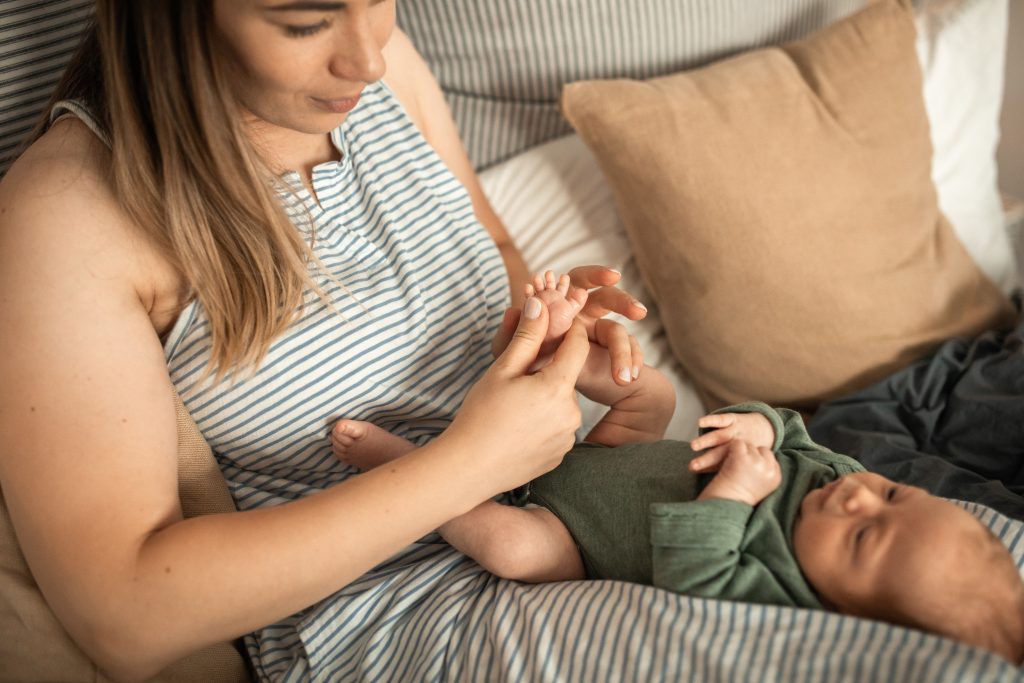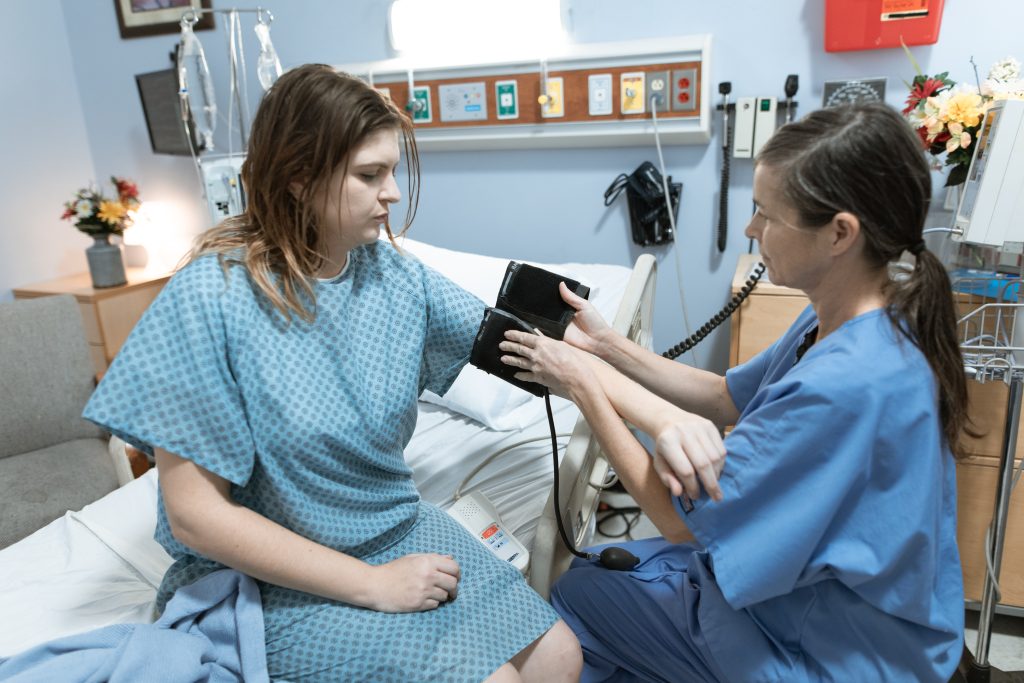Discover the connection between postpartum weight distribution and back pain, with a focus on areas like breasts affected by milk production.
How Does Postpartum Weight Distribution Affect Back Pain, Especially in Areas Like Breasts Due to Milk Production?

Ah, postpartum weight distribution – an ode to the wonders of motherhood! Who would have thought that something so natural and beautiful could also bring about a few aches and pains, particularly in areas like the breasts due to milk production? Let’s dive into the fascinating world of postpartum weight and its impact on back pain.
Understanding Postpartum Weight Distribution
So, what exactly happens to a woman’s body after giving birth? Well, it’s like a magical transformation that combines not only sleepless nights and diaper changes but also changes in weight distribution. The extra pounds gained during pregnancy seem to have a mind of their own, deciding to make themselves comfortable in various regions of the body.
But let’s dive deeper into the science behind postpartum weight gain and distribution. Understanding the factors at play can help shed light on this fascinating phenomenon.
The Science Behind Postpartum Weight Gain
Weight gain during pregnancy is a normal and expected occurrence, as the body prepares to nurture and nourish a growing life. As the little one develops, so does the weight of the mother. It’s like a symbiotic relationship, except instead of sharing meals, the mother takes on the task of consuming enough calories for two.
During pregnancy, the body naturally increases its fat stores for energy reserves and to support the growing fetus. This surplus weight is typically distributed across the abdomen, hips, buttocks, and, you guessed it, the breasts!
But what happens to this weight after childbirth? Does it magically disappear? Not quite. The body goes through a gradual process of shedding the excess weight, but the distribution of the weight can be a bit unpredictable.
Factors Influencing Postpartum Weight Distribution
Now, here’s the thing – postpartum weight distribution can vary from woman to woman. It’s like a game of genetic roulette mixed with hormonal influences and individual lifestyle choices.
Genetics play a significant role in determining where those sneaky pounds decide to set up camp. Some women may find themselves with a lovely hourglass shape after giving birth, while others might notice that their weight manifests in specific areas, like the breasts.
But it’s not just genetics that have a say in the matter. Hormones, always the tricky devils, can also drive weight gain in certain regions. After childbirth, the body experiences a surge of hormones, including prolactin, which stimulates milk production. This hormonal cocktail can result in increased breast tissue, leading to changes in breast size and weight distribution.
Additionally, lifestyle choices can also influence postpartum weight distribution. Factors such as diet, exercise, and stress levels can all play a role in how the body sheds the pregnancy weight and where it decides to settle.
So, while postpartum weight distribution may seem like a mysterious and unpredictable process, it’s actually a combination of genetics, hormones, and lifestyle factors that contribute to this unique transformation.
The Connection Between Postpartum Weight and Back Pain
Now that we’ve explored the fundamentals of postpartum weight distribution, it’s time to delve into the relationship between that weight and back pain. It’s no secret that carrying extra pounds can put stress on the body, and this includes the spine.
The Impact of Weight Gain on the Spine
Imagine for a moment that you’re carrying around a backpack filled with bricks. The longer you carry it, the more strain you’re likely to feel in your back and shoulders. The same concept applies to postpartum weight gain, albeit with a more precious cargo to account for.
Carrying excess weight can alter the natural curvature of the spine, leading to increased pressure on the vertebral discs and muscles. This added pressure can result in discomfort, pain, and a tug-of-war between you and your favorite yoga mat.
But what exactly happens to your spine when you gain weight after giving birth? Well, let’s break it down. As you gain weight, your body’s center of gravity shifts forward. This shift in weight distribution puts additional stress on the lower back, as it tries to compensate for the extra load. The muscles and ligaments in the back have to work harder to maintain proper alignment and support the spine, leading to increased strain and potential pain.
Furthermore, the excess weight can also lead to poor posture, as the body tries to find balance. Slouching or hunching forward becomes more common, which further exacerbates the strain on the back and can contribute to the development of chronic pain.
Postpartum Weight and Chronic Back Pain
While the occasional backache may be considered a normal part of postpartum life, chronic back pain is certainly no walk in the park. Unfortunately, excessive postpartum weight gain can contribute to the development or exacerbation of chronic back pain.
In addition to the physical strain placed on the spine, the emotional toll of chronic back pain can’t be overlooked. Taking care of a little one is challenging enough, and adding persistent pain to the mix can make day-to-day activities feel like an uphill battle. It’s like trying to climb Mount Everest with mismatched socks – not an easy feat!
But why does postpartum weight specifically contribute to chronic back pain? Well, one reason is that the extra weight can lead to weakened core muscles. During pregnancy, the abdominal muscles stretch and weaken to accommodate the growing baby, and this can persist postpartum if not properly addressed. Weak core muscles mean less support for the spine, which can increase the risk of developing chronic back pain.
Additionally, hormonal changes that occur during and after pregnancy can also play a role in back pain. Relaxin, a hormone that helps loosen the ligaments in the pelvis to prepare for childbirth, can also affect other joints in the body, including those in the spine. This increased joint mobility can make the spine more susceptible to injury and pain.
It’s important to note that postpartum weight gain is not the sole cause of back pain. There are various factors that can contribute to or exacerbate back pain, such as poor posture, lack of exercise, and previous back injuries. However, managing postpartum weight and maintaining a healthy lifestyle can certainly help reduce the risk of developing chronic back pain.
The Role of Breast Size and Milk Production in Back Pain
Now, let’s delve deeper into the fascinating world of the role of breast size and milk production in the delightful dance of postpartum back pain. As mentioned earlier, the hormonal changes that occur after childbirth can lead to fluctuations in breast size and weight, which can have a significant impact on your body.
The Anatomy of Breast Weight Gain During Lactation
During the miraculous process of lactation, the breast tissue undergoes remarkable changes to accommodate milk production. These changes can result in increased size and weight, almost like adding a couple of watermelons to your chest. It’s truly awe-inspiring how our bodies adapt to nurture our little ones.
As the breasts become larger and heavier, the added weight can strain the muscles and ligaments in the chest and upper back. Imagine carrying around two watermelons all day – it’s no wonder that discomfort and pain can become a daily companion. Your body is working hard to provide nourishment, and it’s only natural that it may experience some strain.
How Milk Production Contributes to Back Pain
While we marvel at the wonders of breast milk and the body’s amazing ability to nourish a little one, it’s essential to acknowledge the potential challenges that come with it. Milk production requires energy, and that energy comes from you.
The body requires resources to produce breast milk, including calories and nutrients. If you’re not consuming an adequate diet and engaging in self-care, your body may end up feeling exhausted, fatigued, and achy. It’s like trying to run a marathon on an empty stomach – not the best idea!
Furthermore, the demands of breastfeeding can be physically demanding. The act of nursing involves holding your baby in a specific position, which can strain your back and shoulders over time. It’s like doing a repetitive exercise without proper form – eventually, your muscles will start to protest.
Additionally, the hormonal changes that occur during lactation can affect the elasticity of your ligaments and joints. This can make you more susceptible to back pain and discomfort, as your body’s support system may not be as stable as it once was.
It’s important to remember that every woman’s experience with breastfeeding and back pain is unique. Some may sail through the process without any issues, while others may face significant challenges. If you’re experiencing persistent or severe back pain, it’s always a good idea to consult with a healthcare professional who can provide personalized guidance and support.
Prevention and Management of Postpartum Back Pain
Now that we understand the ins and outs of postpartum weight distribution and its impact on back pain, let’s turn our attention to prevention and management strategies. After all, we believe in empowering mothers to tackle any challenges that come their way!
Lifestyle Changes for Back Pain Relief
When it comes to managing postpartum weight and back pain, certain lifestyle changes can work wonders. Incorporating regular exercise, such as gentle yoga or walks with the stroller, can help strengthen the muscles that support the spine.
Practicing good posture is another key component of back pain relief. It’s all about standing tall, engaging the core, and avoiding the dreaded slouch that can wreak havoc on your back.
Medical Interventions for Postpartum Back Pain
If lifestyle changes aren’t cutting it, fret not! There are medical interventions available to help alleviate postpartum back pain. Consultation with a healthcare professional can lead to recommendations such as physical therapy, chiropractic care, or even temporary pain management techniques like massages or hot/cold therapy.
The Long-Term Effects of Postpartum Weight Distribution
We’ve covered quite a bit of ground on the journey through postpartum weight distribution and its relationship with back pain. But what about the long-term effects? Does that extra weight have any lasting impact?

Postpartum Weight and Future Health Risks
While the immediate concern may be the discomfort and back pain associated with postpartum weight distribution, long-term consequences should also be considered. Excessive weight gain after pregnancy can increase the risk of various health conditions, such as cardiovascular diseases and diabetes.
It’s essential to prioritize holistic health and maintain a balanced lifestyle to minimize these potential risks. After all, you’re not just a superhero for your little one but for yourself as well.
The Psychological Impact of Postpartum Weight and Back Pain
Finally, let’s not forget the psychological toll that postpartum weight and back pain can take on a new mother. It’s perfectly normal to experience a range of emotions while navigating the postpartum period.
Feeling uncomfortable in your own body can be challenging, and chronic pain can add an extra layer of stress. This is where open conversations, seeking support from loved ones, and embracing self-care activities can make a world of difference. Remember, you’re doing an incredible job as a mother, and a little self-love goes a long way.
So, there you have it – a playful exploration into the world of postpartum weight distribution and its notorious connection with back pain, particularly in areas like the breasts due to milk production. Remember, as challenging as it may be, motherhood is a journey worth cherishing, and taking care of your body is an essential part of that adventure. Embrace the changes, seek support when needed, and keep shining, you incredible super-mom!



